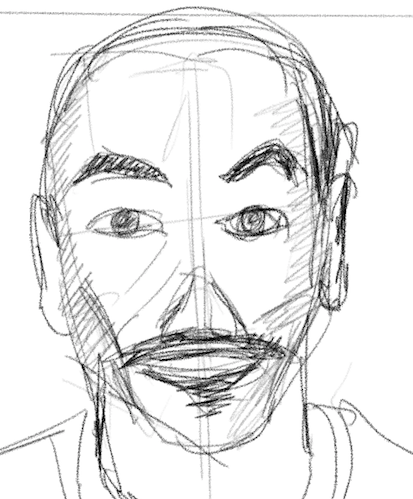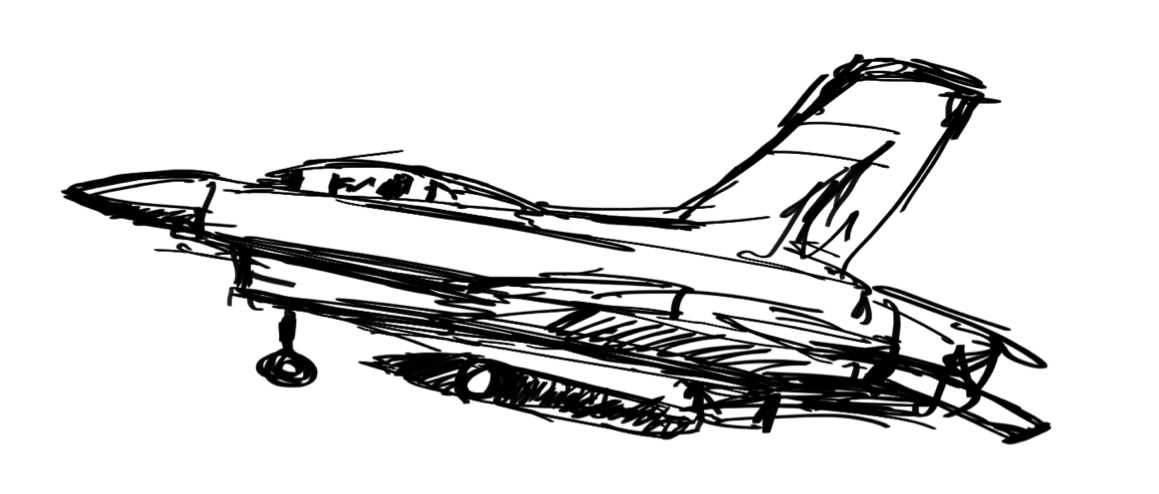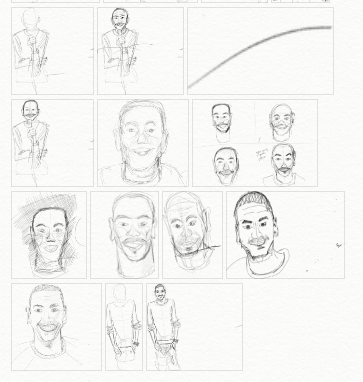Journal 16: Things I Learned
Another week in the books. I tried drawing Jerrod Carmichael a bunch. I wanted a drawing to go along with my podcast notes post for Carmichael’s appearance on the Tim Ferriss Show. It felt like I regressed. I couldn’t draw his face at all. A lot of attempts ended looking more like 2Pac.

It was just rep after rep of drawing and I didn’t seem to be getting closer. I bought Alphonso Dunn’s Pen and Ink Drawing: A Simple Guide. I don’t expect it to be a magic bullet or anything. It’s not instantly going to drop me into deliberate practice, but I’m hoping it will help me move toward useful practice.
If you’re at all interested in learning to draw, check out Alphonso Dunn’s YouTube channel. Throw a random video on and draw along with it.
Along with Pen and Ink Drawing, here’s what else I’ve been reading and listening to.
- Snow Crash by Neal Stephenson — I’m picking this up again after nearly a year away from it. I’m always amazed when reading sci-fi books and then looking at the publish date. This is from 1992 but so many aspects could be from today. The main character pulls his VR goggles on in the passenger seat. This is for sure going to happen with middle schoolers and their parents.
- The Alchemist by Paulo Coelho — I hadn’t read it before. I didn’t even really know what it was about. I always thought it was one of those 600 page tomes but it’s a pretty quick novel. It’s essentially about following your dreams and the law of attraction. However you feel about those things just about sums up whether you’ll like the book or not. Meaning I’m somewhere in the middle. Passion isn’t the end-all for picking a career, but I think affirmations work. (Very long shrug.)
- Stealing Fire by Steven Kotler and Jamie Wheal (audiobook)— In The Rise of Superman (check out my notes), Kotler wrote about action sports athletes and how they’ve unlocked the shortcut to flow. Stealing Fire continues on and explains how people are unlocking that state without jumping off cliffs or into gigantic waves.
- Born a Crime by Trevor Noah (audiobook) — If you haven’t started listening to audiobooks, I always recommend picking one that’s written and narrated by a comedian you enjoy. This was great. I haven’t traveled much internationally. Noah takes you on his journey growing up in South Africa. I’m about the same age as him and there was more to relate to than I expected. Street Fighter II and was one of the first kids he knew with a CD burner.
- Wired to Create by Scott Barry Kaufman and Carolyn Gregoire (audiobook) — It’s right smack in the middle of the bubble I’m trying to avoid this year. I’m really enjoying this—which is how I ended up in this bubble in the first place. They write about the science behind creativity and how can nurture our creativity day to day.
More notes for those are on the way. Here are things I’ve learned from some other books I’ve been reading and listening to lately—and some drawings to go with them.
A farmer and his tools

I’m re-reading Deep Work. Cal Newport writes about the importance of focused blocks of time. Ideally the no-internet, away from people, in a shack in the woods type of focus. Since that isn’t possible for most people, he explains how knowledge workers can move toward that kind of focus.
Instead of a shack in the woods, you can at least have a closed door. Instead of being away from people, you can try to work away from your desk. (Headphones don’t exactly do the trick.) Instead of having no internet (though you can probably achieve this), don’t use the internet for entertainment.
One major way we use the internet for entertainment is social media. There’s some value to social media as a tool. Long story short, I have my current job because of a tweet I happened to see one day through someone else retweeting it. I might have a similar job but this specific one was a result of social media.
Newport explains the tool use by sharing some thoughts from Forrest Pritchard, a farmer in Virginia. Pritchard explains why he doesn’t make his own hay.
“Let’s start by exploring the costs of making hay,” Pritchard said. “First, there’s the actual cost of fuel, and repairs, and the shed to keep the baler. You also have to pay taxes on it.” These directly measurable costs, however, were the easy part of his decision. It was instead the “opportunity costs” that required more attention. As he elaborated: “If I make hay all summer, I can’t be doing something else. For example, I now use that time instead to raise boilers [chickens meant for eating]. These generate positive cash flow, because I can sell them. But they also produce manure which I can then use to enhance my soil.”
Newport abstracts these principles and calls it The Craftsman Approach to Tool Selection. Tools should be used if positives far outweigh negatives.
Social media has had positive impact for me. I’ve also spent hours and hours scrolling through endless streams looking at interesting things. It’s entertainment. It’s leisure, which is good. Infinite leisure probably isn’t good.
I try minimizing my time using social media because it’s a great tool for minimizing your time.
Regressing to the mean

In The Undoing Project, Michael Lewis writes about psychologists Amos Tversky and Daniel Kahneman (author of Thinking, Fast and Slow), who collaborated through a couple decades. If you haven’t directly read any of their work, you’ve likely read something based on their work. Or rooted for a team who picks players using principles based on their work.
Earlier in his career, Kahneman worked with the Israeli air force, helping in training pilots. Some instructors thought criticism led to better performance.
“The pilot who was praised always performed worse the next time out, and the pilot who was criticized always performed better. Danny watched for a bit and then explained to them what was actually going on: The pilot who was praised because he had flown exceptionally well, like the pilot who was chastised after he had flown exceptionally badly, simply were regressing to the mean. They’d have tended to perform better (or worse) even if the teacher had said nothing at all.”
This seems straightforward when it’s pointed out. From reading The Undoing Project and recently listening to Decisive by Chip and Dan Heath, it’s becoming clear that we make these mistakes constantly. We want to see patterns, so we’ll make them up and they take hold. Whether the pattern is real or not.
The Warriors weren’t going to follow up a 9-loss regular season with a better record. It didn’t matter if they were entirely praised or entirely criticized through the entire summer. It didn’t matter if Kevin Durant would mix in well or not. All that matters is that it’s unlikely that you’ll follow up the best performance in history with an even better performance.
Let walking be the destination

In Declutter Your Mind, S.J. Scott and Barrie Davenport write about decluttering different aspects of your life: thoughts, obligations, relationships, and environment. Part of decluttering your environment involves being mindful in your activities. Including walking:
Wherever you are walking (either indoors or out), whatever your destination, pay attention along the way. You don’t have to hustle along with your eye on the outcome. Let walking be the destination.
This could double as a metaphor for life and enjoying the journey and so on. But I’m sharing it at face value because I’ve been interested in walking lately.
(Some posts from recent walks: Central Park/The Met and The High Line.)
I bought a couple more batteries for my Fuji X100. I’ve also been shooting with the Nexus 5X so I might just keep doing that. My commute is a walking commute now. I’m trying to do what I can to take walks more frequently. Somehow capturing my walks and thoughts while walking might become a big part of this blog.
Now I just need to find some woods nearby.
